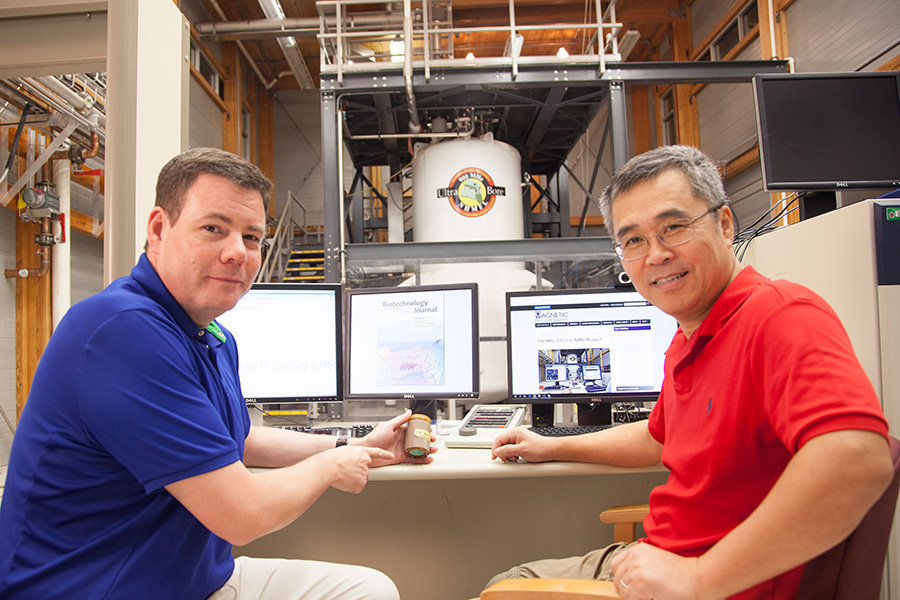
Two Florida State University researchers have received a $1.7 million grant from the National Institutes of Health to find new treatments for stroke.
In the United States, stroke is the fifth leading cause of death and one of the primary causes of disability, with more than 795,000 individuals experiencing an attack each year. But the only drug approved by the Food and Drug Administration has limited effectiveness.
Now, two researchers from the FAMU-FSU College of Engineering will focus their collective efforts on developing new treatments that could treat this complicated medical issue.
Samuel Grant, associate professor of chemical and biomedical engineering and director of the MRI user program at the FSU-headquartered National High Magnetic Field Laboratory, and Teng Ma, professor and chair of the Department of Chemical and Biomedical Engineering, will investigate how to use cells from bone marrow and fat tissue as a way to treat what’s called an ischemic stroke. This form of stroke occurs as a result of a blockage in a blood vessel supplying blood to the brain and accounts for about 87 percent of all cases, according to the American Heart Association.
To date, a clot-busting drug called tissue plasminogen activator is the mainstay of stroke treatment, but it is only effective if administered within a short time after stroke onset and only for a small percentage of stroke patients.
“Our long-term goal is to develop cell therapy technology for stroke treatment,” Ma said. “Specifically, we will develop technology that allows us to produce therapeutically competent cells as well as the ability to monitor their fate in the brain. The knowledge gained will help establish cell therapy as a viable technology in stroke treatment.”
Researchers will look at cells called human mesenchymal stem cells that are found in both marrow and fat tissue. Grant and Ma believe that they can pretreat these cells and deliver them into the brain of patients who have experienced a stroke.
These cells have attracted the attention of scientists and clinicians because of their potential for tissue repair and regeneration after migration to sites of tissue injuries, including damage in the brain.
“Use of these preconditioned cells should increase their therapeutic effect and viability once transplanted in the stroked brain,” Ma said.
A major barrier, however, is that many of these cells die once transplanted, which greatly reduces the therapeutic benefits for stroke treatment. Additionally, the fate and transport of these cells to the stroke lesion are not well understood.
The joint effort of the investigators’ laboratories seeks to address these problems. Ma’s laboratory has developed a unique bioreactor system to enhance the cells’ survival rate after transplantation by preconditioning them as 3D aggregates or clumps, which have demonstrated improved viability and increased migration in cell cultures. Grant’s laboratory has developed techniques and instruments to take advantage of the sophisticated magnet technology at the National MagLab that can assess the efficacy of transplanted cells in a living organism.
They will use the world’s only 21.1 Tesla magnet, essentially a super-powered MRI, to track cells, observe the cells’ impact on metabolic and ionic recovery and assess the mechanisms that can be optimized to improve stroke outcomes.
“This machine provides the sensitivity and specificity to monitor the fate and transport of implanted cells over time while also letting us detect early markers for stroke recovery,” Grant said. “This will allow us to make critical decisions about how cells can be better prepared to treat stroke.”




